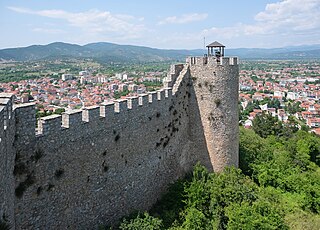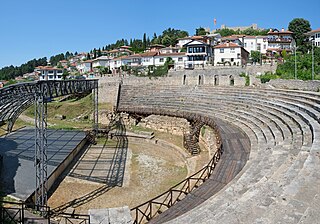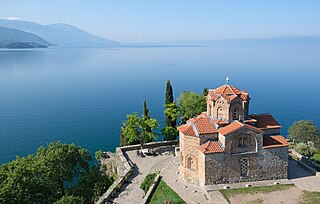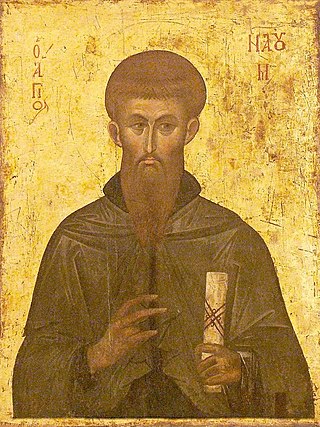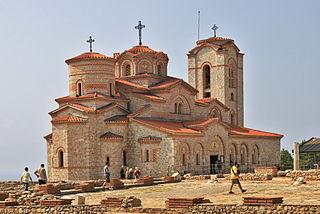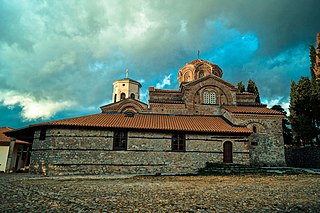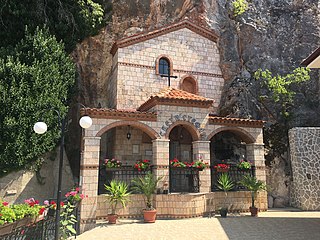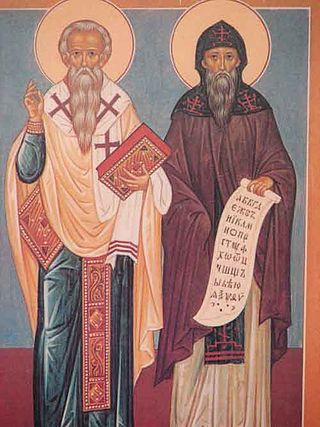10 Sights in Ohrid, North Macedonia (with Map and Images)
Legend
Premium Sights
Book tickets, guided tours and activities in Ohrid.
Guided Free Walking Tours
Book free guided walking tours in Ohrid.
Welcome to your journey through the most beautiful sights in Ohrid, North Macedonia! Whether you want to discover the city's historical treasures or experience its modern highlights, you'll find everything your heart desires here. Be inspired by our selection and plan your unforgettable adventure in Ohrid. Dive into the diversity of this fascinating city and discover everything it has to offer.
Sightseeing Tours in OhridActivities in OhridSamuel's Fortress is a fortress in the old town of Ohrid, North Macedonia. It was the capital of the First Bulgarian Empire during the rule of Tsar Samuel of Bulgaria at the turn of the 11th century. Today, this historical monument is a major tourist attraction and was heavily restored in 2003 with the addition of entirely new battlements where none had survived.
The Ancient theatre of Ohrid is located in Ohrid, North Macedonia. It was built in 200 BC and is the only Hellenistic-type theatre in the country as the other three in Scupi, Stobi and Heraklea Lynkestis are from Roman times. It is unclear how many people the original theater used to seat, as only the lower section still exists. The open theater has a perfect location: the two hills that surround it keep it protected from winds that could interfere with acoustics during performances. It was built at the end of 3rd or the beginning of 2nd century BC, during the late Hellenistic period.
Saint John the Theologian, Kaneo or simply Saint John at Kaneo is a Macedonian Orthodox church situated on the cliff over Kaneo Beach overlooking Lake Ohrid in the city of Ohrid, North Macedonia. The church is dedicated to John of Patmos, the writer of Revelation, who has been by some considered to be the same person as John the Apostle. The construction date of the church remains unknown but documents detailing the church property suggest that it was built before the year 1447. Archaeologists believe that the church was constructed some time before the rise of the Ottoman Empire very likely in the 13th century. Restoration work in 1964 led to the discovery of frescoes in its dome.
4. Monument St. Clement Ohridski
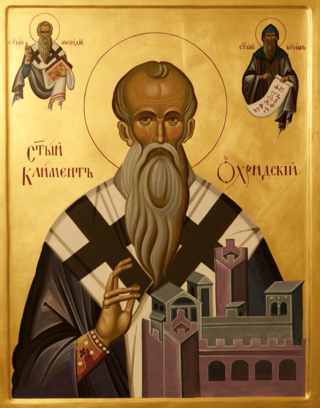
Saint Clement of Ohrid was one of the first medieval Bulgarian saints, scholar, writer, and apostle to the Slavs. He was one of the most prominent disciples of Cyril and Methodius and is often associated with the creation of the Glagolitic and Cyrillic scripts, especially their popularisation among Christianised Slavs. He was the founder of the Ohrid Literary School and is regarded as a patron of education and language by some Slavic people. He is considered to be the first bishop of the Bulgarian Orthodox Church, one of the Seven Apostles of Bulgarian Orthodox Church since the 10th century, and one of the premier saints of modern Bulgaria. The mission of Clement was the crucial factor which transformed the Slavs in then Kutmichevitsa into Bulgarians. Clement is also the patron saint of North Macedonia, the city of Ohrid and the Macedonian Orthodox Church.
5. Monument to St. Naum of Ohrid
Naum, also known as Naum of Ohrid or Naum of Preslav, was a medieval Bulgarian writer and missionary among the Slavs, considered one of the Seven Apostles of the First Bulgarian Empire. He was among the disciples of Cyril and Methodius and is associated with the creation of the Glagolitic and Cyrillic script. Naum was among the founders of the Pliska Literary School. Afterwards Naum worked at the Ohrid Literary School. He was among the first saints declared by the Bulgarian Orthodox Church after its foundation in the 9th century. The mission of Naum played significant role by transformation of the local Early Slavs into Bulgarians.
6. St. Clement and Panteleimon
The Church of Saints Clement and Panteleimon is a Byzantine church situated on Plaošnik in Ohrid, North Macedonia. It is attributed to Saint Clement of Ohrid, a disciple of Saint Cyril and Saint Methodius. Archaeologists have come to believe that the church is located on the site where the first students of the Glagolitic alphabet were taught in the First Bulgarian Empire.
7. Plaoshnik
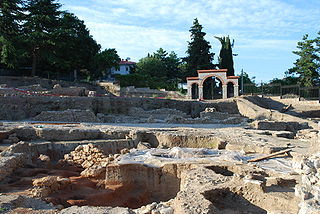
Plaošnik or simply Plaoš is an archaeological site and holy place in Ohrid, North Macedonia, located 250 meters below Samuil's Fortress. The site is in the process of being restored to its original condition.
8. Church of Holy Mother of God Perivleptos
Our Lady of Privoleptos is a church located in the town of Ohrid, built before 1295. The fresco inscription in the narthex, among other persons, mentions the Exile and the year of the "erection", i.e. the fresco painting of the church, 1295.
Wikipedia: Црква „Пресвета Богородица Перивлептос“ - Охрид (MK)
9. St. Stephen
Sveti Stefan, commonly known as Sveti Stefan Pantsir, is a Macedonian cave church located in the Ohrid village of Šipokno, just above the settlement of Sveti Stefan. The church is the main monastery of the Šipoknica Monastery.
10. Monuments of Saints Cyril and Methodius
Saints Cyril and Methodius were Macedonian brothers from Thessaloniki in the 9th century, who became missionaries of Christianity among the Slavs of Great Moravia and Pannonia. Through their work they influenced the cultural development of all Slavs, which is why they received the title of Apostles of the Slavs. They are credited with inventing the Glagolitic alphabet, the first alphabet used to transcribe Old Church Slavonic. After their deaths, their disciples continued their work and activity among the Slavs.
Share
How likely are you to recommend us?
Disclaimer Please be aware of your surroundings and do not enter private property. We are not liable for any damages that occur during the tours.
